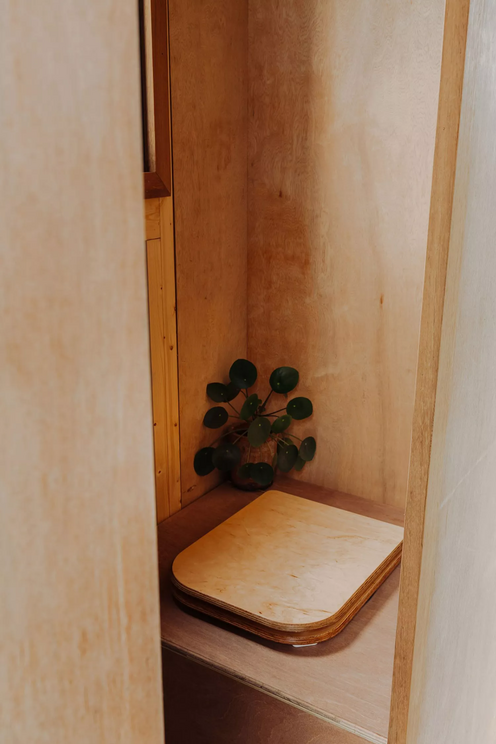Ireland's 'Tigin' tiny home is built with hemp and cork
Fact checked by Haley Mast
This minimalist little home feels like the right size—and there will be open-source plans.
At the root of the tiny house movement is the idea that small is beautiful, and living a simpler lifestyle is not only better for the planet, but for people who want freedom from the vicious cycle of consumerism, and mortgage debt. But with the popularity of tiny homes growing tremendously during the last several years, prices for these right-sized dwellings have also shot up. Thankfully, it is still cheaper if one is willing to put in the effort to build one's own tiny home, but it can be a daunting task if one is not familiar with basic woodworking and construction know-how.
Fortunately, there is a number of organizations and groups out there that teach the tiny-curious these basic skills, as well as how to navigate more nebulous things like permits and local regulations for tiny homes. Ireland's Common Knowledge is one such social enterprise that offers workshops to teach people to build their own homes, in addition to offering open-source blueprints. Their workshops have helped nearly 200 people so far in learning important skills in bricklaying, carpentry, and welding, and have also produced several pre-built tiny homes that are now available for sale.
One of these is the Tigin—which means "small house" or "cottage" in Gaelic. Built in collaboration with Margent Farm, the home features hemp panels created with a mix of sugar-based resins that come from plant waste, as well as locally grown cannabis plant fibers.

As Common Knowledge co-founder Harrison Gardner explains on Dezeen, demand for tiny houses like the Tigin reflect larger societal trends, as well as the variety of ways that tiny houses can respond to the housing affordability crisis, and help people "escape the rent trap":
"The Tiny Home is filling that gap between moving out of the rental market and owning your own home. The reality for a lot of people is that they can't afford a home that's actually ready to move into. They can only afford a home that needs a lot of work, and they can't afford to do that work and pay rent. The Tiny Home is filling this gap; people can use it for a year or two or three, while they work on their forever home."
The 215-square-foot Tigin features two levels, with the ground floor comprising of a living room with a sofa bed, kitchen, bathroom, and workspace. Up above at the mezzanine level, there is a bed for sleeping in. Almost a quarter of the home's cork-insulated walls have windows, making the interior spaces brighter and easier to ventilate naturally. Says Gardner:
"Compared to a lot of tiny homes that exist in the world, ours is quite tall and it has a lot of glazing. You get a real feeling of space and feel completely connected to nature."
The Tigin's interiors are pared down, yet still feel quite warm, thanks to the generous use of wood everywhere, as well as areas of exposed rigid cork insulation. Materials were chosen to ensure that the tiny home is as lightweight as possible.

The placement of the various windows is done in a way to prioritizes views to the outside, some of them connecting a straight line down and through the house, so that one doesn't feel boxed in.

The layout is simple, but it works. One end of the home is dedicated as a multipurpose space for sitting, or for a guest or two to sleep over with the inclusion of a convertible sofa bed.

At the other end of the home, we find another multipurpose area in one corner. Here, it's been outfitted with an adjustable shelving system, but it could very well be swapped out for a desk to create a home office.

Opposite the shelves, there is a bathroom that is equipped with a composting toilet and shower.

The loft above actually has a lot of headroom, thanks to the home's roof sloping up on this end.

Pricing for the Tigin is comparatively affordable at about $54,800—with the profits being used to fund future workshops. There are plans to release a toolkit with a full set of architectural drawings, a list of materials with suggested suppliers, as well as a price scale. Says Gardner:
"We're trying to create options in the toolkit, so people can scale the price up or down," he said. "For instance, if they don't want to use cork insulation, they can switch it out for something else."
All in all, the Tigin is a lovely example of how tiny homes can be built as an open source and collective effort, to support future collective efforts to empower people to build their own dream homes. To see more visit Common Knowledge and their Instagram.

